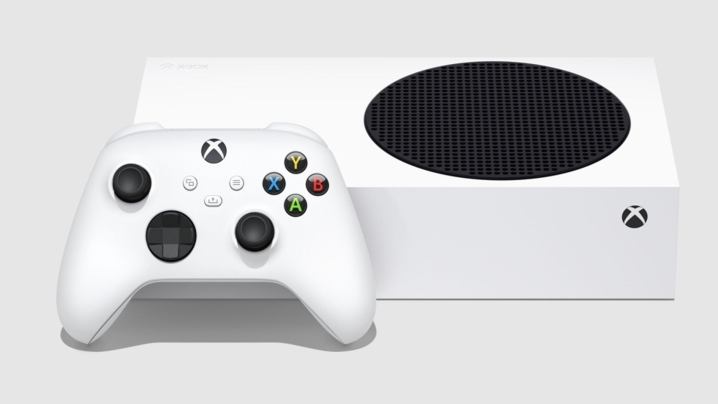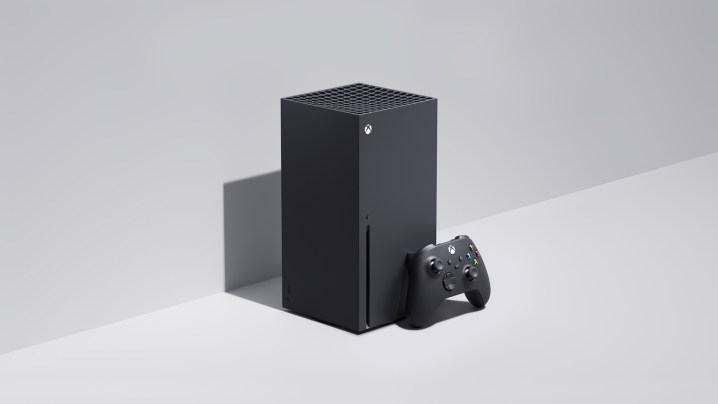The Xbox Series X and Xbox Series S represent Microsoft’s fourth-generation home video game consoles designed around AMD’s 8-Core Zen 2 CPU and Radeon RDNA 2 graphics architecture. The two consoles succeed the Xbox One X and Xbox One S, offering better performance and more power across the board. New features include display resolutions up to 8K, built-in solid-state drives for faster access times, and support for real-time ray tracing.
With two powerful consoles available, it’s important to be aware of how they stack up against one another so you can make the most informed buying decision. Here’s our Xbox Series X and Series S comparison.
Specifications
| Xbox Series X | Xbox Series S | |
| CPU | 8 core, AMD Custom Zen 2 CPU @ 3.8GHz | 8 core, AMD Custom Zen 2 CPU @ 3.6GHz |
| GPU | AMD Custom RDNA 2 @ 1.825GHz w/52 compute units (12.15 TFLOPS) | AMD Custom RDNA 2 @ 1.565GHz w/20 compute units (4 TFLOPS) |
| Weight | 9.8 lbs | 4.25 lbs |
| Memory | 12GB GDDR6 | 10GB GDDR6 |
| Memory bus | 320-bit | 128-bit |
| Memory bandwidth | 560GB/s (10GB), (8GB) 336GB/s | 224GB/s (8GB), 56GB/s (2GB) |
| Storage | 1TB PCie Gen 4 NVME SSD | 512GB PCie Gen 4 NVME SSD |
| AV output | HDMI 2.1 in/out, 720p, 1080p, 1440p, 4K, 8K | HDMI 2.1 in/out, 720p, 1080p, 1440p, 4K |
| I/O output | USB 3.2 X 3, Microsoft Storage Expansion Slot | USB 3.2 X 3, Microsoft Storage Expansion Slot |
| Communication | Ethernet, Wi-Fi | Ethernet, Wi-Fi |
| Controller | Updated Xbox 4th Generation Controller | Updated Xbox 4th Generation Controller |
| Optical drive | 4K UHD Blu-ray | N/A |
| 4K Support | Yes | Yes |
| 8K Support | Yes | No |
| Price | $500 | $300 |
| Availability | November 10, 2020 | November 10, 2020 |
| DT Review | 3.5/5 | 3/5 |
Hardware
When it comes to hardware, both home consoles are loaded with technology from AMD, including the company’s 8-Core Zen 2 CPU and custom Radeon RDNA 2 graphics architecture. Speeds differ between the
The most significant difference comes when we take a closer look at the RDNA 2 graphics processors, with the
The
The
Winner:
Design

Both
On the back, one finds the standard ports for the Series X, including two USB Type-A ports, an Ethernet jack, an HDMI port, Microsoft’s storage expansion card slot, and a power jack.
The Xbox Series S is a smaller unit with a design that is reminiscent of Microsoft’s Xbox One S design: it is white and flat and features a large, black circular cooling vent. The front of the Series S features the same white Xbox logo as its bigger brother, as well as a USB Type-A port and a control pairing button — notably missing is a disc drive. Altogether, the Xbox Series S is 60% smaller than the Series X.
Given just how elegant and small the Xbox Series S is — and considering its power — it’s easy to prefer it over the more expensive Series X system, at least in terms of design. Sure, the Series X is inoffensive in appearance, but we have to give it to the Series S thanks to taking up little shelf space.
Winner: Xbox Series S
Resolution and frame rate

Both Xbox consoles can output impressive resolutions, offering 720p, 1080p, 1440p, and
In comparison, the Series S has been designed to output 1440p resolutions at 60 fps up to 120 fps. Thus, even though the Xbox Series S supports
Winner:
Home theater features

When it comes to relaxing in your home theater or den, the
When it comes to audio output, neither console features a digital optical out port, so you are limited to HDMI 2.1. On a positive note,
While the Xbox Series S offers a near-perfect solution for those with a digital library, the
Winner:
Games and backward compatibility

No matter whether you select the
Moving to the latest generation of Xbox consoles won’t mean leaving your favorite games behind as both Series X and Series S offer complete backward compatibility for Xbox One titles (excluding those that require the use of the now-defunct Kinect sensor). The new generation of Xbox consoles also supports some Xbox 360 and original Xbox games.
Both
Winner:
Price and availability

the
Winner: Xbox Series S
Overall winner — Xbox Series X

Gamers have a reason to be excited about the
Best of all, no matter which system you select, you’ll enjoy the same games in the end.
Editors' Recommendations
- Is Sea of Thieves cross-platform?
- Best video game deals: PlayStation 5, Xbox S and X, Nintendo Switch
- The most common Xbox Series S problems and how to fix them
- GTA 5 cheats: codes and phone numbers PS4, PS5, Xbox, and PC
- The best cozy games


